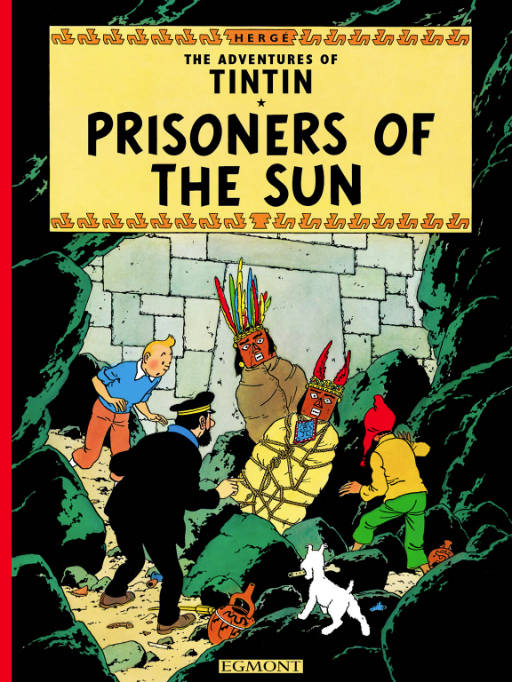

Whilst it’s the follow up to The Seven Crystal Balls, Prisoners of the Sun is quite different. Whereas Balls is very much a European affair, with lots of comedy and interpersonal drama, Prisoners is an exotic Peruvian travelogue.
The artwork is fabulous, beautifully evoking everything from the flora and fauna to the varied landscapes. And in this quintessentially adventurous album, nature in its many guises – mountains, forests, rivers – and exotic peoples and animals, a as ll play their part.
Hergé loved National Geographic magazine, and Prisoners is a kind of Boys Own Adventure version of NG, on steroids. The hokum of the Inca sacrilege thread is pure ‘McGuffin’, by which I mean plot driving yet immaterial.
By this stage, Hergé had come a long way from the anti-Soviet and colonialist roots of the first two albums (Soviets and Congo). And yet whilst Tintin is proud to appear to respect the Inca and stand up for natives bullied by ‘foreigners’, neither he nor Hergé have entirely escaped the white man’s burden of condescension, witness the ‘playing’ of Western scientific knowledge against native superstition.
But it’s great that we can still enjoy this classic serving of Tintin in-Bowdlerised; beautifully rendered if still laden with the assumptions of its times. It’s a cracking good adventure. A as of a great deal of fun. Love it!
